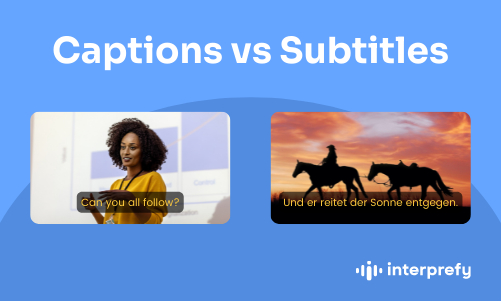Whether you are a content creator, event manager, meeting organiser, or busy professional, adding subtitles or closed captions to your live content and videos is a game-changer.
A recent study by UK charity Stagetext reports that four out of five young people use subtitles when they watch TV. The charity's research further suggested an average of 31% of people would go to more live events if more had captions on a screen in the venue.
Subtitling and captioning have begun to shape a new norm of how people consume videos and live content. But as soon as words start appearing on video screens, many people tend to use the terms captions and subtitles interchangeably.
Let's look at subtitles and captions in-depth: What are they, and how do they differ?
In this article, we’re going to look at the differences between subtitles, and captioning, and what their best use case is.
In this article:
1. Captioning
1.1. What is captioning?
1.2. The benefits of captions
1.3. Where captions can be used
1.4. How people access captions
1.5. Types of captions
1.6. How captions are generated
2. Subtitles
2.1. What are subtitles?
2.2. Types of subtitles
2.3. The benefits of subtitles
2.4. Where subtitles can be used
2.5 How subtitles are generated
3. The differences between captions and subtitles
4. Blurring the lines





.webp?width=468&quality=high)











 More download links
More download links



